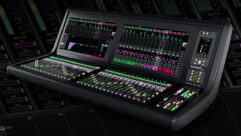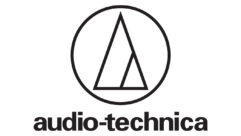
The Buzz: Install of the month:
Pier T, Long Beach, Calif.
Oct 1, 2005 12:00 PM,
By Trevor Boyer
Keep on Truckin’
Platt Design Group completely changed out the communication system at Pier T, Long Beach, Caif., in less than 48 hours. The “in” gate pedestals got new custom-designed mics.
Audio systems described as “high-end” generally are light years ahead of those that are “good enough.” But what happens when a “high-end” system is required to achieve “good enough” results? At a busy pier in Long Beach, Calif., the type of sophisticated DSP typically reserved for performance spaces was necessary to allow for the transmission of crisp vocal communication over fiber-optic cables.
Pier T in Long Beach is a terminal for trucks that carry shipping containers. It’s operated by Total Terminals, a joint venture between Hanjin Shipping and Marine Terminals. Two thousand trucks a day drop off and pick up shipping containers at the facility. This volume makes a smooth flow of truck traffic a necessity in an era of heightened security.
Embarcadero Systems Corporation (ESC) of Alameda, Calif., is the IT systems provider for Pier T. ESC specializes in implementing IT systems for the transportation industry, which has a strong union presence. “When we implement some type of a technology, everything has to be done in accordance with the union’s contracts,” says Marcos Munoz, field services manager with ESC.
The IT system envelops Pier T’s fiber-based AV system, which is key to its security operations. When a truck pulls up to one of 21 “pedestals” at the “in” gate of the facility, the driver pushes a button that activates the AV system at that pedestal. Optical character recognition technology identifies each truck by its numbers, and the individual truck and its associated container are given clearance to proceed. Verbal communication is required between the driver and the clerk — a member of the International Longshore and Warehouse Union in the facility’s tower, 300ft. away from the in-gate pedestal.

The new system at Pier T is based on the LCS Audio LX-300 matrix mixer.
Ideally, no verbal exchange is necessary at the “out” gate. But incomplete information and unexpected problems mean that about 30 percent of out-gate transactions require audio communication as well.
The audio system that was in place was certainly sufficient for this type of task, but it was not up to the uniquely difficult environment at Pier T. This caused real problems for the clerks. Pier T is a high-noise, high-stress environment where truck air breaks squeal, diesel engines roar, and every wasted second slows the flow of trucks. The background noise, combined with microphones that deteriorated rapidly outdoors, caused drivers’ voices to be too loud or too garbled and created painfully loud digital clipping that prevented clerks from understanding truckers’ words. Many drivers are not native speakers of English, which was another challenge for the clerks. Continual repetition and frustrated yelling — accompanied by loud blasts to the clerks’ ears — were everyday occurrences. There was talk of a strike. A superior solution was sorely needed.
Platt Design Group in Sierra Madre, Calif., is used to setting up audio distribution for high-end systems in venues such as theme parks, but Pier T presented a unique challenge. There was no capability in the DSP to put peak limiting on the system, so it was constantly being over-driven. Platt Design President Bill Platt and his team needed to devise a high-quality, easy-to-program system with a large matrix of inputs and outputs. The team had less than 48 hours to completely switch out the old hardware system for the new. Platt based the new system around a mixer normally installed in high-end entertainment systems: the LCS Audio LX-300 matrix mixer, in which he installed noise-reduction software algorithms. The team also worked with LCS to write new algorithms, which were then tested and tweaked for their ability to reduce truck noise. “We could reduce the dynamic range of [the signal], and then EQ it properly and reduce the noise,” says Platt.
Platt Design also worked with a manufacturer to build a custom preamp and a custom microphone assembly with a Shure capsule that could withstand the diesel- and saltwater-infused environment of Pier T. “All of a sudden [the clerks] were hearing more of a studio-quality sound coming through the headphones,” says Platt.
With experience designing outdoor systems for theme parks, Platt designed a system for Pier T that would withstand the elements for years to come, and also made sure the matrix was future-proof, with far greater I/O capabilities than are used today. This was not merely a vague morale boost for the clerks, either: ESC studies proved that processing time at “in” gates was reduced by 14 percent as a direct consequence of the new system.
Subscribe to Sound & Video Contractor e-newsletters!
Sound & Video Contractor EXTRA
Systems Integration Special Focus series:
Houses of Worship
Corporate AV
Breaking industry news in your email inbox every other week! Subscribe at www.svconline.com.










